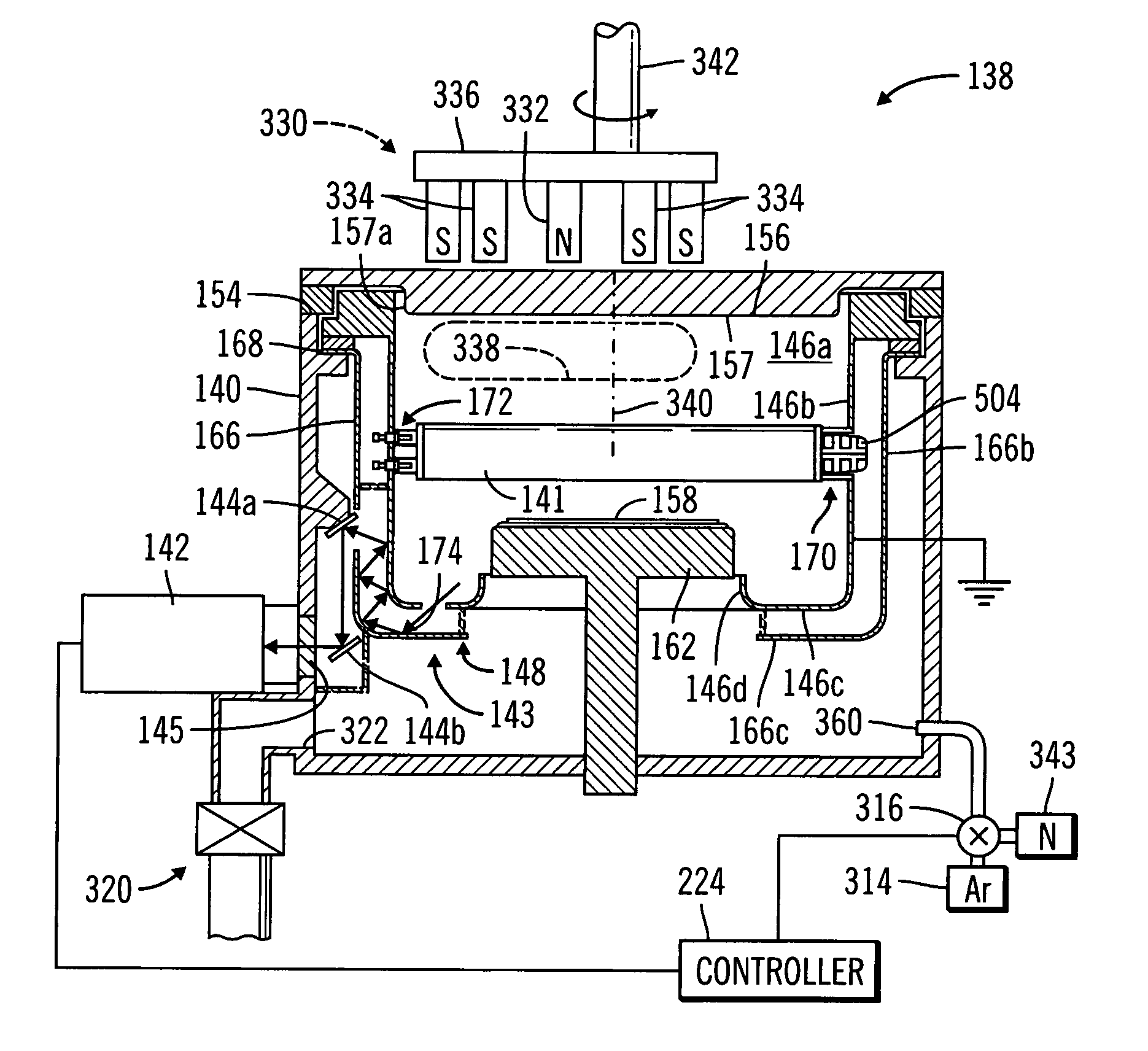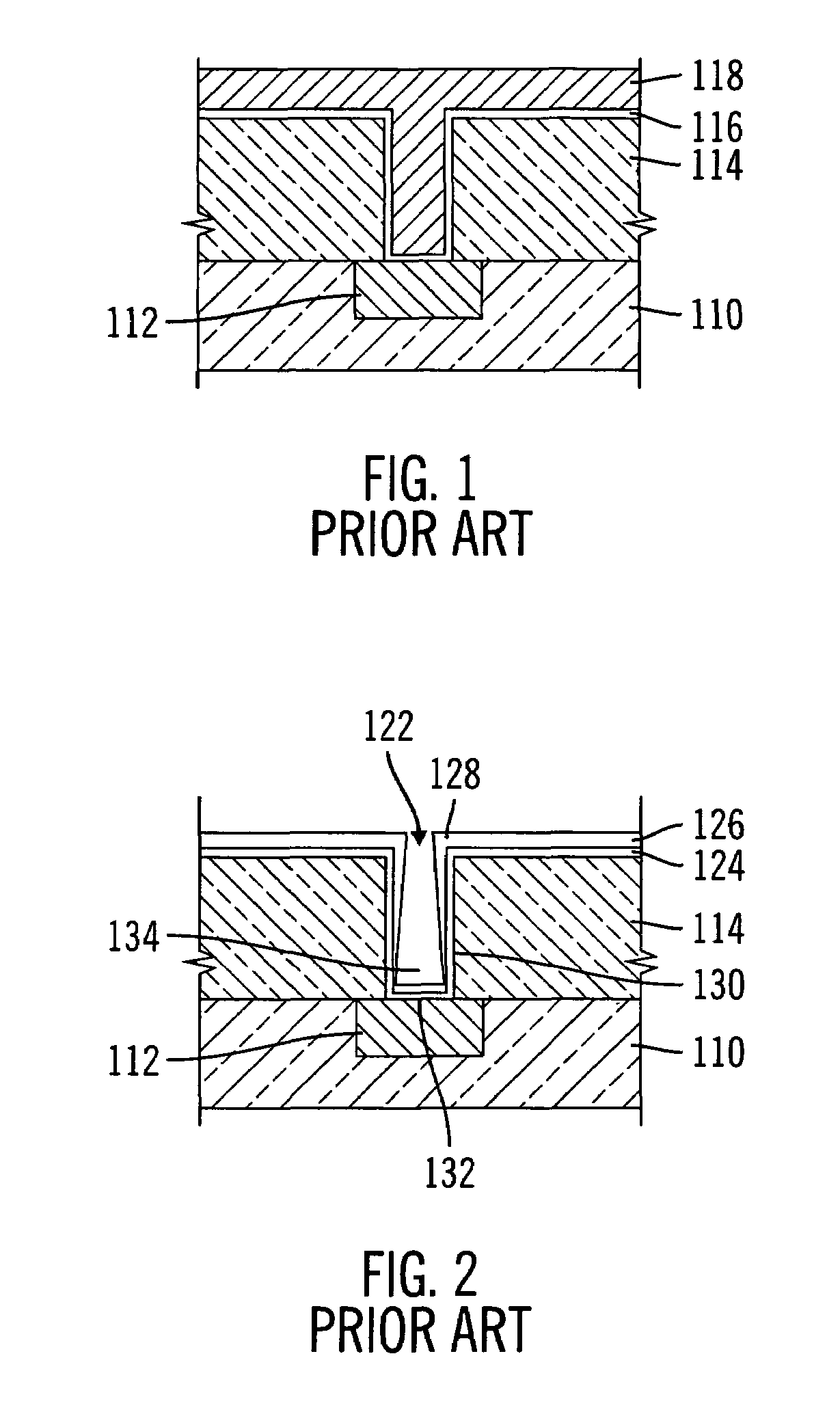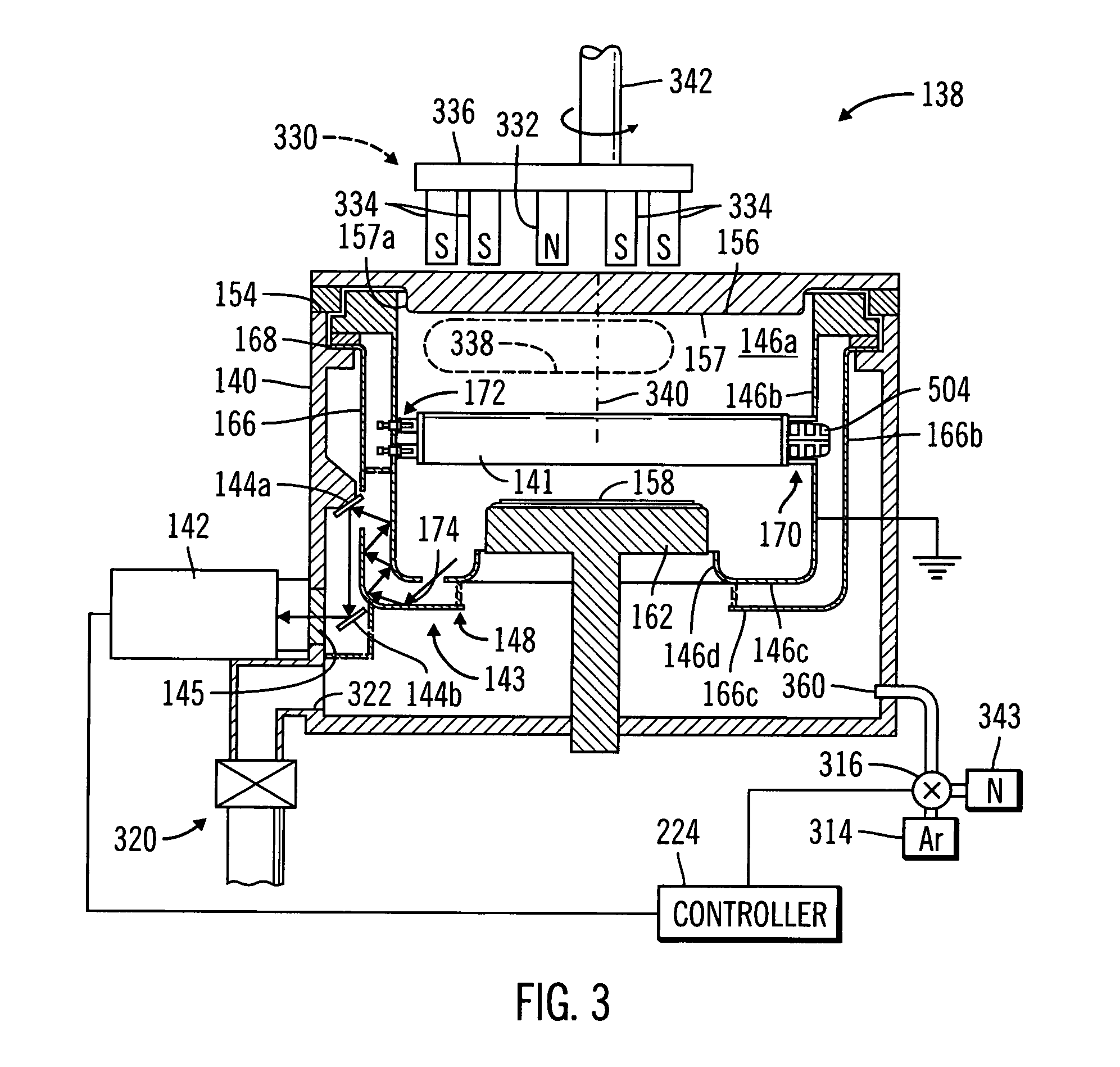End point detection for sputtering and resputtering
a technology of end point detection and sputtering, applied in the field of sputtering and resputtering, can solve the problems of introducing reliability problems, disadvantageous wide distribution, and difficult reflow ou
- Summary
- Abstract
- Description
- Claims
- Application Information
AI Technical Summary
Benefits of technology
Problems solved by technology
Method used
Image
Examples
Embodiment Construction
[0017]Plasma etching or resputtering of a layer of sputtered materials including opaque metal conductor materials may be controlled in a sputter reactor system. In one embodiment, resputtering of a sputter deposited layer is performed while additional material is being sputter deposited onto a substrate. A path positioned within a chamber of the system directs light or other radiation emitted by the plasma to a chamber window or other optical view-port which is protected by a shield against deposition by the conductor material. In one embodiment, the radiation path is folded to reflect plasma light around the chamber shield and through the window to a detector positioned outside the chamber window.
[0018]In some applications, the chamber shield may be positioned to inhibit the deposition of conductor material or other opaque sputtered material onto the window, thereby permitting the deposition of material onto the substrate in a prior step or at the same time that material is being r...
PUM
| Property | Measurement | Unit |
|---|---|---|
| widths | aaaaa | aaaaa |
| thickness | aaaaa | aaaaa |
| sizes | aaaaa | aaaaa |
Abstract
Description
Claims
Application Information
 Login to View More
Login to View More - R&D
- Intellectual Property
- Life Sciences
- Materials
- Tech Scout
- Unparalleled Data Quality
- Higher Quality Content
- 60% Fewer Hallucinations
Browse by: Latest US Patents, China's latest patents, Technical Efficacy Thesaurus, Application Domain, Technology Topic, Popular Technical Reports.
© 2025 PatSnap. All rights reserved.Legal|Privacy policy|Modern Slavery Act Transparency Statement|Sitemap|About US| Contact US: help@patsnap.com



